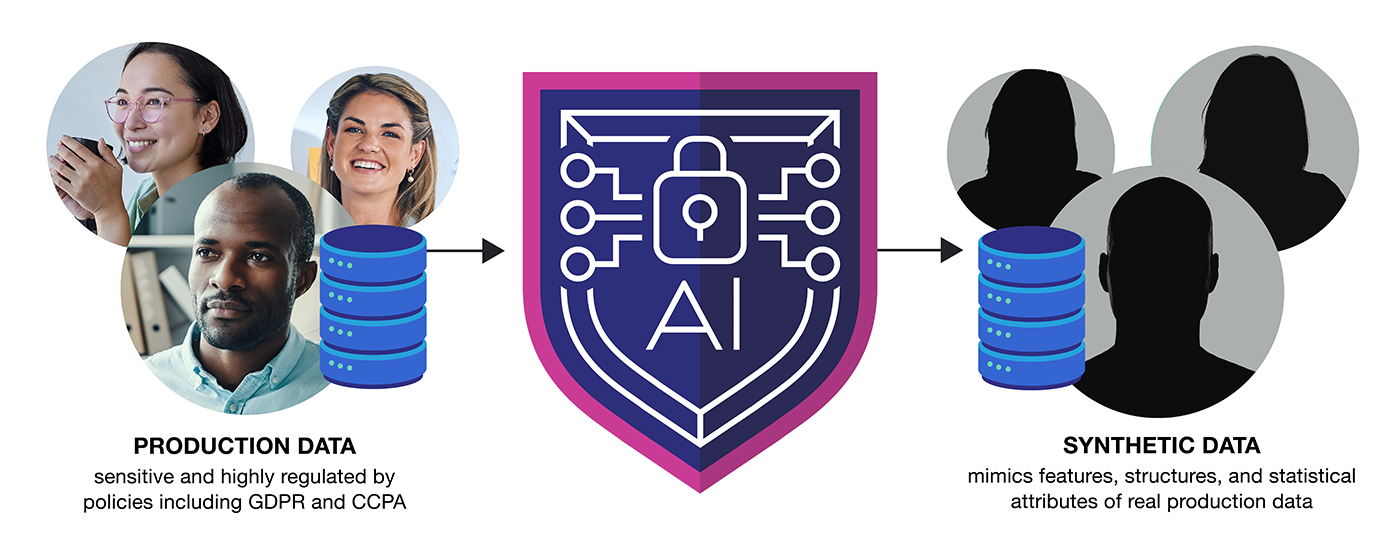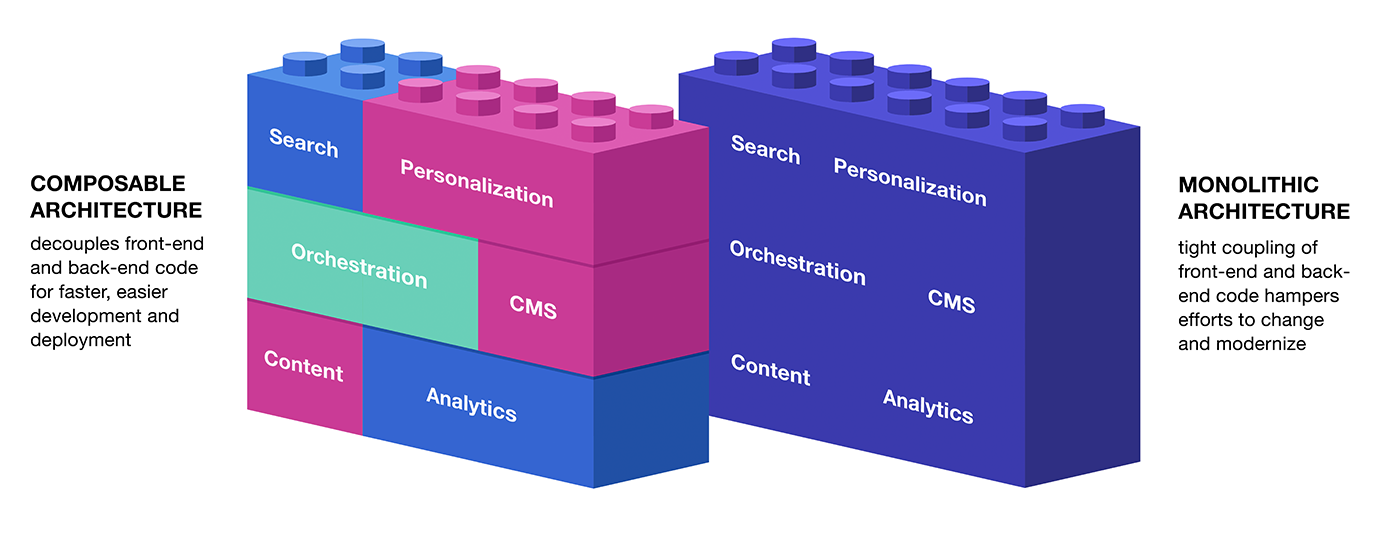Managing and leveraging data for digital experiences is no longer a competitive advantage—it’s a business necessity. In 2025, organizations must navigate expanding data volumes, AI integration across operations, and the demand for real-time insights to drive personalization and efficiency.
Organizations that embrace these trends will lead in customer experience optimization and business growth, while those that lag risk losing market share. Let’s explore the seven key data management trends shaping 2025.
Trend 1) AI-Powered Data Analysis: Faster Insights & Smarter Decisions with Agentic AI

AI is no longer just assisting analysts—it’s operating autonomously in cloud-native data warehouses and analytics platforms. These AI-driven systems automatically identify patterns, anomalies, and insights with less human oversight, allowing data teams to focus on strategic initiatives rather than routine data analysis.
For digital experience teams, this shift means:
- Faster insights into customer behavior patterns.
- Stronger personalization based on real-time data.
- Proactive issue resolution before customers even notice a problem.
Expect AI-driven analysis to become a standard feature in platforms like Adobe Customer Journey Analytics, giving teams instant access to actionable insights.
“By 2027, AI assistants and AI-enhanced workflows incorporated in data integration tools will reduce manual intervention by 60% and enable self-service data management.”
Additionally, AI-powered customer segmentation will refine how businesses personalize experiences, using real-time insights to dynamically adjust messaging, recommendations, and offers. This capability also supports personalized sales outreach with AI, ensuring businesses engage customers with relevant content at the right moment.
Trend 2) End of Manual Data Prep: How AI is Reshaping Data Readiness
Data preparation has long been one of the biggest bottlenecks in analytics. AI is now automating time-consuming tasks like data cleansing, normalization, and classification—ensuring high-quality datasets without manual effort.
For digital teams, this automation unlocks:
- More time for strategic work like journey mapping and campaign optimization.
- Better AI model performance with cleaner, more consistent data.
- Faster campaign execution thanks to reliable, well-structured datasets.
By eliminating manual data wrangling, organizations can focus on higher-value analytics and decision-making.
Trend 3) Synthetic Data: A Game-Changer for Customer Insights & Data Privacy
Privacy concerns and data limitations are driving the rapid adoption of synthetic data—AI-generated datasets that maintain statistical accuracy while protecting individual privacy.
With technologies like Generative Adversarial Networks (GANs) and Variational Autoencoders (VAEs), companies can:
- Test and refine personalization strategies before deployment.
- Train AI models on diverse, bias-free datasets without real-world risks.
- Conduct thorough QA testing without exposing customer data.

As customer data privacy regulations like GDPR and CCPA tighten, synthetic data is becoming an essential tool for customer analytics and AI development. Businesses must also prioritize customer consent management to maintain transparency and compliance when handling sensitive data.
Trend 4) Democratized Data Integration: Breaking Down Data Silos & Taking Control of Your Data
Low-code and no-code platforms are empowering business users to integrate and analyze data without relying as heavily on IT teams. This shift accelerates decision-making and provides a more complete view of the customer journey.
Platforms like Adobe Experience Platform (AEP) and Adobe Customer Journey Analytics (CJA) make it possible to ingest and unify data sources into self-serve reporting interfaces. However, with this increased accessibility comes the need for strong data governance.
“By improving customer data integration, businesses can create unified customer profiles that provide a 360-degree view of customer interactions, enabling more effective personalization and engagement.”
Organizations must implement operating models to provide:
- Data quality standards to ensure accuracy.
- Clear documentation and approval processes to prevent inconsistencies.
- Defined governance frameworks to protect security and compliance.
By improving customer data integration, businesses can create unified customer profiles that provide a 360-degree view of customer interactions, enabling more effective personalization and engagement. This requires data ingestion and data synchronization processes to ensure that information flows seamlessly across systems without delays or inconsistencies.
Trend 5) AI-Enhanced Data Governance: The Future of Compliance and Data Integrity
As regulations tighten and AI-driven personalization becomes more prevalent, stronger data governance is essential. Organizations are leveraging AI to automate governance tasks, ensuring real-time compliance and data integrity.
For example, in Adobe Customer Journey Analytics, anomaly detection is now:
- Embedded directly in reporting dashboards.
- Integrated with Intelligent Alerts to flag unusual trends instantly.
- Proactive rather than reactive, identifying issues before they escalate.
With AI-enhanced governance, organizations can maintain data quality, compliance, and trust—without slowing innovation.
A robust customer data governance strategy is critical for brands looking to maintain trust while leveraging AI for customer journey analytics and predictive insights. This includes strengthening data ethics policies to align with evolving consumer expectations and regulatory requirements.
Trend 6) Cloud-Native Data Management: The Key to Scalable, Real-Time Insights
Cloud-native architectures are evolving into composable data ecosystems, giving organizations the flexibility to build modular data management solutions tailored to their needs.

A key innovation in this space is Federated Audience Composition, available in Adobe Real-Time CDP and Adobe Journey Optimizer. This capability enables organizations to:
- Use data directly from existing warehouses without full ingestion.
- Reduce storage redundancy while maintaining real-time access.
- Speed up audience segmentation for personalized digital experiences.
As more brands invest in customer data platforms (CDPs) to unify and analyze customer data, composable architectures will ensure scalability, adaptability, and efficient data utilization. Many organizations are also evaluating the role of data platforms in streamlining operations and integrating diverse customer touchpoints across their ecosystems.
Trend 7) Privacy-First Data Practices: Balancing Security & Personalization
Privacy has shifted from a compliance requirement to a key driver of customer trust and loyalty. Organizations that prioritize ethical data practices will gain a competitive edge.
“As customers demand greater transparency in customer data management, businesses must implement robust customer data protection measures while maintaining personalized experiences.”
Key privacy-first strategies emerging in 2025 include:
- Differential privacy – Adding statistical noise to protect individual identities.
- Federated learning – Allowing AI models to train on decentralized data.
- Zero-trust frameworks – Ensuring that data access is tightly controlled.
As customers demand greater transparency in customer data management, businesses must implement robust customer data protection measures while maintaining personalized experiences. Ensuring compliance with data privacy regulations and adopting data security best practices will be crucial for protecting consumer trust.
Looking Ahead in 2025
Successful data management in 2025 requires a strategic customer-centric approach that balances technology, governance, and ethical considerations. Organizations that lead in this space will:
- Leverage AI-driven automation for speed and accuracy.
- Strengthen data governance to ensure compliance and reliability.
- Adopt composable architectures for scalability and flexibility.
- Prioritize privacy-first data practices to build customer trust.
The future of data management is smarter, faster, and more privacy-conscious than ever. Organizations that align these trends with clear business outcomes will be best positioned to deliver exceptional digital experiences.
Take the Next Step in Data Management

Data management is evolving rapidly, and staying ahead requires more than adopting new technologies—it demands a strategic, outcome-driven approach. Organizations that embrace AI-driven automation, composable architectures, and privacy-first practices will be positioned to deliver seamless, personalized digital experiences that drive real business growth.
Navigating these changes can be complex, but you don’t have to do it alone. BlastX Consulting helps leading brands optimize their data strategies, implement creative solutions, and unlock the full potential of their digital experiences. Contact our team today and get started.

